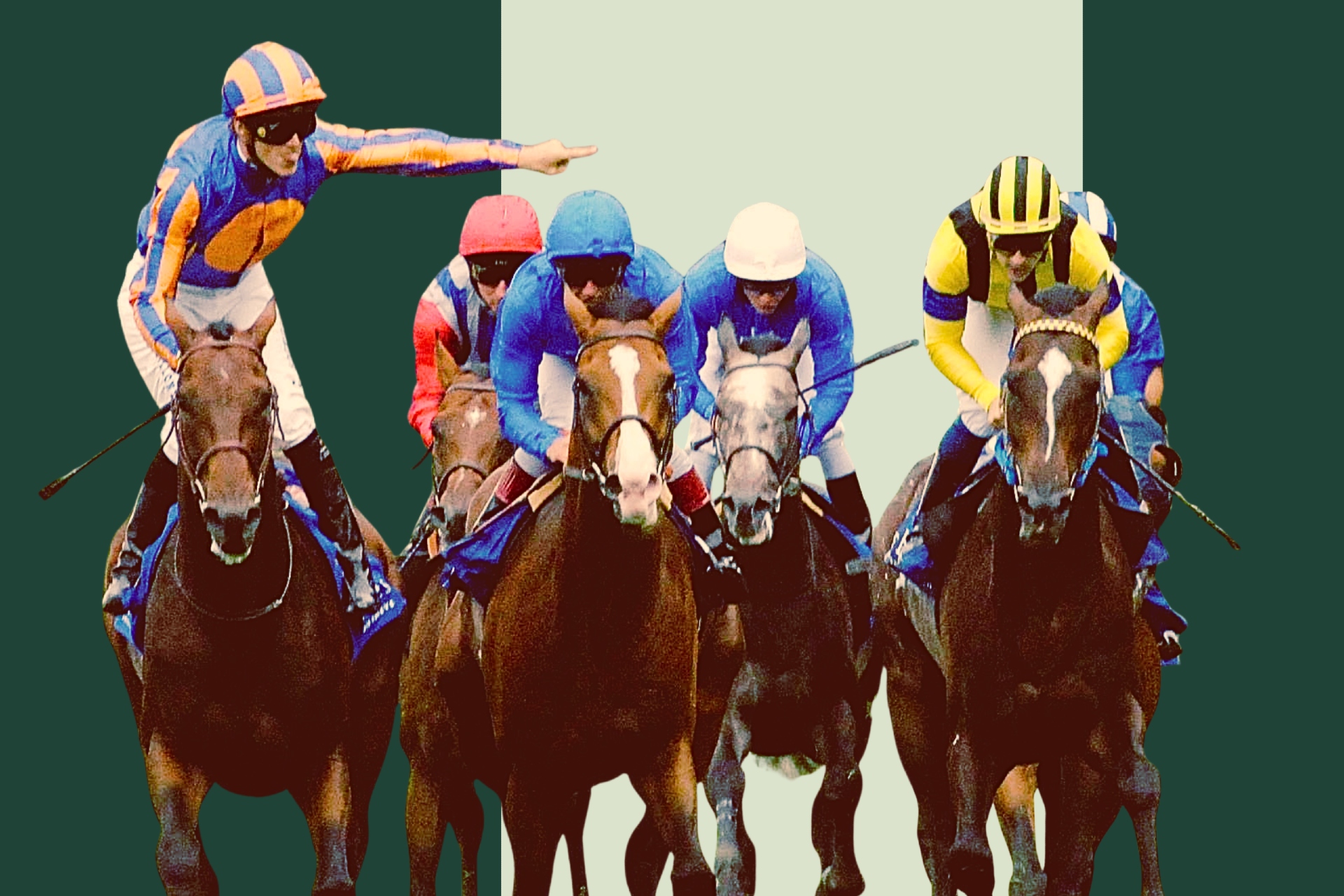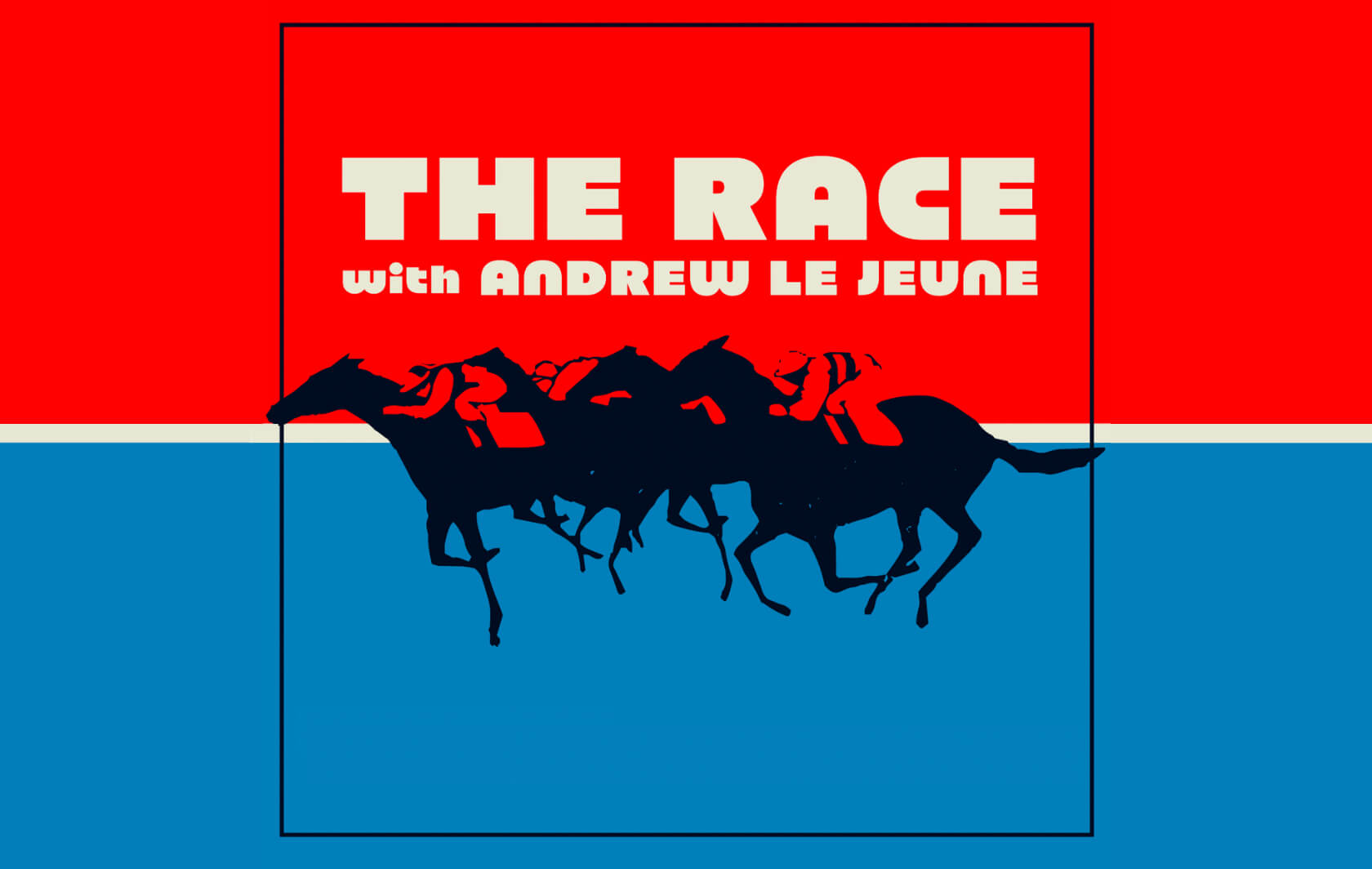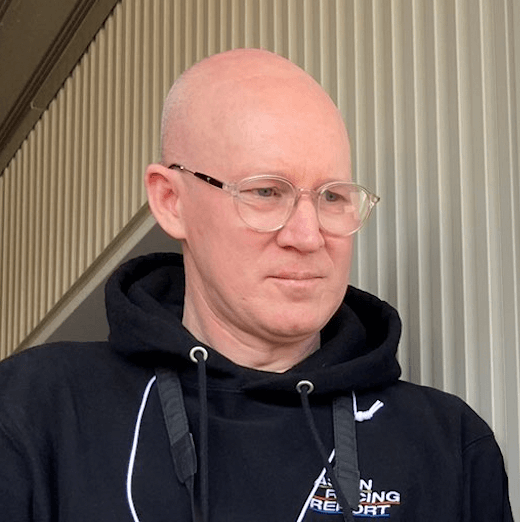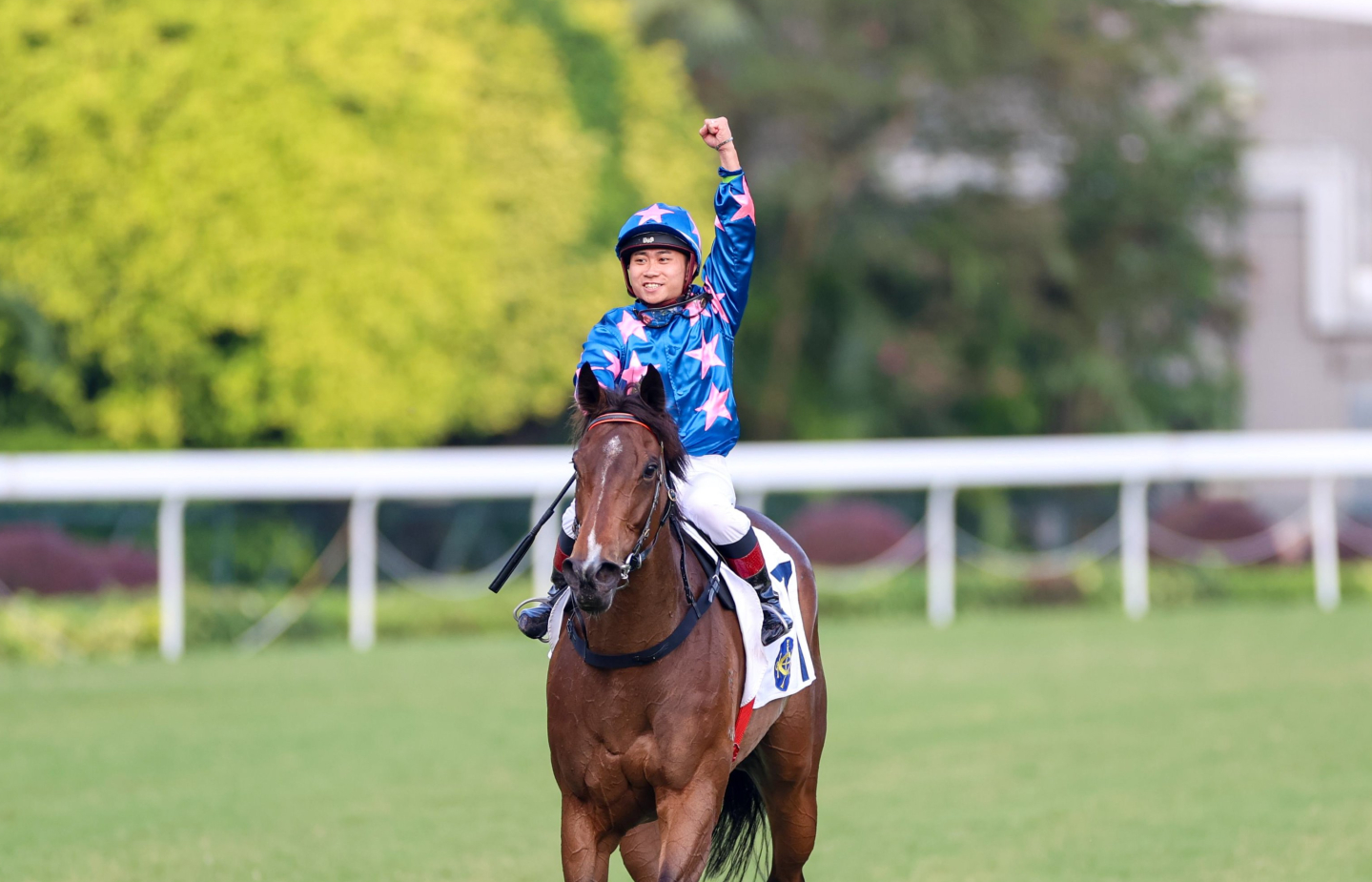Playing The Long Game: Ascot, York, Goodwood and Leopardstown Know The Value In Wooing The Japanese
There has not been a non-European runner in the King George VI and Queen Elizabeth Stakes since 2019 but the big British and Irish tracks are working together to attract intercontinental runners, especially the Japanese.
Playing The Long Game: Ascot, York, Goodwood and Leopardstown Know The Value In Wooing The Japanese
There has not been a non-European runner in the King George VI and Queen Elizabeth Stakes since 2019 but the big British and Irish tracks are working together to attract intercontinental runners, especially the Japanese.
24 July, 2025ASCOT RACECOURSE last week announced record revenues in a 2024 financial results bulletin that bodes well for its great midsummer feature, the G1 King George VI & Queen Elizabeth Stakes, and that includes the race’s international profile.
Truth be told, the King George, although still the pinnacle of high summer in Europe, has slipped a little from its high pedestal in recent years as the Prix de l’Arc de Triomphe in Paris each October has gone from being its equal to becoming the de facto European championship race. Autumn on the Bois de Boulogne has gained an edge over summer in Berkshire.
That edge has much to do with prize money and plenty to do with the Arc’s ability to consistently attract Japanese-trained stars. This weekend’s King George promises to be another brilliant race, with top-tier Europeans Calandagan, Jan Breughel, Rebel’s Romance, Kalpana and possibly the dual Derby winner Lambourn in line to race for a record pot of £1.5 million, but there’s no denying it lacks the intercontinental scope that is so desired in this age of globalisation spear-headed by World Pool.
Since Ivan Allan sent Hong Kong’s Indigenous to run sixth in the King George in 1999, only seven other non-European-trained contenders have attacked the race: one South African and one Argentine; Hard Buck’s third place for North America; four Japanese runners, the first being Air Shakur in 2000, the best being Heart’s Cry’s third in 2006, and the latest Cheval Grand in 2019. Ascot knows it needs more ‘carrot’ to entice Japanese horsemen.
But within that Ascot statement highlighting, among other positive barometers, £8.4 million in pre-tax profit and record prize money scheduled this year of £17.75 million, was talk of “enhanced global prominence” which had “laid the foundation” for this year’s all-time high purse money.
Part of bolstering that “global prominence” is nudging the King George back to where it belongs and that means attracting regular intercontinental participants – Royal Ascot is already a success on that front – and especially star runners from Japan. The Japan Racing Association (JRA)’s champion sprinter Satono Reve’s Group 1 second at the Royal Meeting in June will have helped the cause.
“There’s no Japanese King George runner this year but we’ll keep pushing it and we’ll keep increasing the prize money,” Nick Smith, Ascot’s director of racing and public affairs, told Idol Horse earlier this summer.
“Prize money is king in Japan … we need to work on the prize money for the King George: £1.5 million is great in European terms but for Britain’s flagship middle-distance race for all ages it should be higher and it will be higher.
“In Japan they breed for the King George they breed for the Arc, they’re still proudly breeding middle distance horses and we want those horses in the King George.”
Smith has been to Japan “about 25 or 30 times” and he is not alone: executives from the top tier racecourses in Britain and Ireland have been travelling the globe at times each year throughout most of this century working to attract the best non-European runners to enhance their races. In the now of gobalisation, with JRA simulcast arrangements being coveted and World Pool – the Hong Kong Jockey Club’s lucrative commingling offering – ever-expanding, that desire is evolving into a need.
“There is very close collaboration,” Smith said. “Myself, Ed Arkell from Goodwood and William Derby from York, we travel together and do the job as one, really.”
Derby, York’s chief executive, recalls proudly the run of Japan’s champion Zenno Rob Roy at his racecourse, 20 years ago this August, and is clearly excited at the prospect of Japan’s current star four-year-old Danon Decile hitting the Knavesmire next month to mark that anniversary.
“It makes sense for the three British tracks and Leopardstown to work together,” Derby said. “Often an intercontinental horse will have a number of targets and it makes sense for those connections for us to be consistent and coherent, working in tandem with each other, and that seems to work well.”
Derby notes that he was also thrilled with the Australian sprint mare Ortensia’s win at York back in 2012 – she won at Goodwood, too – but the appeal of having Japanese runners is especially evident. Japanese racing is in better health than perhaps any other jurisdiction, and the depth of quality in the JRA’s Group 1 ranks means top-class horses will travel if the conditions are right.
“The Japanese link for us is quite a strategic one that has been going on for a number of years,” said Vicki Donlon, Leopardstown’s interim chief executive, conscious of the reality that no Japanese trained horse has won in Ireland, and only Deirdre and Shin Emperor in 2024 have attacked Leopardstown’s all-age gem, the G1 Irish Champion stakes.
“It takes a lot of time and effort to create the relationship with the Japanese and the representatives and agents we use over there as well, and it’s based on trust.”
A problem for the Europeans, especially the British and Irish, is the prize money on offer, paltry compared to the other major events around the world that the Japanese will target: en masse in the cases of the highly-lucrative Dubai World Cup, Saudi Cup, Hong Kong International Races and Breeders’ Cup. The King George is Britain’s joint-richest race but that £1.5 million pot pales beside the Saudi Cup’s US$20 million.
“You get all these Japanese horses going to the middle east in the spring,” said Smith. “Myself, William and Ed (Arkell, Goodwood’s director of racing), we’re very pleased if we can get one Japanese horse to each of our venues.”
Earlier this year Longchamp announced a series of ‘win and you’re in’ races to attract runners to France across the season leading to its flagship Prix de l’Arc de Triomphe in October. Ascot, York and Goodwood, also announced their British Midsummer Bonus offering incentives for owners and trainers to bring more than one horse to race in Britain during July and August. The timing is strategic: Japan’s Group 1 horses have no domestic options from mid-June though to late August.
“That stemmed from York, Goodwood and Ascot working together on long haul flights and airport lounges talking about how we could help attract the best to Europe and the UK in the high summer,” Derby said.
“It was really targeted at making it worthwhile for connections of multiple horses – whether that’s milers, mile and a quarter, mile and a half horses – to come together and race at the Sussex Stakes and the King George and then hopefully come onto the Juddmonte International Stakes. I’m sure we will learn from it this year.”
Donlon said the Midsummer Bonus and the French incentive had given Irish racing something to think about.
“It would be naïve to say it doesn’t up the ante,” the Leopardstown chief said. “It’s up to us then as Irish racing to see what we can do in the future to increase our attractiveness.”
To have any chance of attracting those prominent runners, subsidised travel is a must.
“That’s a non-negotiable now,” said Smith. “You have to do it: that’s the landscape, travel allowances are a given.”
Ascot’s allowances are paid to horses rated from about 115 and up, and how much they get will also be determined by how far a horse is travelling and their star appeal.
“If you’re rated over 125, or a horse like Equinox or Winx, then obviously you are talking about a different level of travel allowance: you would work out a special package,” Smith said.
“It’s more money for horses coming from Japan and less for America simply because a lot of the time you’re dealing with different travel options and of course we get many more horses coming from America so they tend to share pallets (on the plane), but if you’re coming from Japan you’re probably coming on your own.”
World Pool, operated by the Tote in Britain and Ireland, is helping the Europeans to try and ‘level up.’ It brings in important revenue on Group 1 days – this year’s Royal Ascot produced turnover of HK$1.58 billion (US$252 million) – and if there is a Japanese runner in a Group 1, the JRA can gain government approval to allow that race to be simulcast into Japan for betting.
Exact figures are not available, but the widely reported amount the tracks might make from World Pool is £500,000 to £600,000 per day.
“At the moment it would be a little lower,” Smith said prior to this year’s Royal Meeting which went on to show year on year increases across each day, with total turnover on the Wednesday being a record HK$330.7 million (US$43 million).
“On launch and through Covid, World Pool had some pretty spectacular numbers and the numbers are now finding their feet. It’s still new, it’s a very important income stream but it’s hard now to predict exactly what we’re going to get. But it’s still the biggest innovation in betting in generations, and it’s a huge contributor to prize money.”
The racecourses also receive media rights income that the tracks receive when they have a race simulcast into Japan, though that figure too is not available.
“There is a commercial benefit through media rights, albeit it may not be as beneficial as people might think,” Donlon said. “There’s no big prize pot or windfall from having that Japanese runner, but there are commercial benefits through the media rights.
“Having a Japanese horse run over here increases interest from that side of the world, and while the Japanese don’t bet into the World Pool, there is a familiarity with the runners from that jurisdiction from the surrounding jurisdictions that do bet into World Pool, be that Hong Kong or others in that region.”

Ascot was World Pool’s original partner back in June 2019 so Smith and his colleagues there have had longer to see which factors impact World Pool turnover.
“In terms of actually driving revenue through horses, funnily enough it’s more jockeys,” he said. “We don’t have the volume of international horses coming into Europe to really test World Pool in that dynamic, we find that it’s more interesting looking at which jockeys attract interest from Hong Kong.”
With that in mind, he mused that he would like to see how World Pool would perform at an event like the Shergar Cup, while noting that was unlikely due to the Group 1 tie-in to World Pool events.
Donlon said she “hates” viewing it all through a commercial angle, but even so, she acknowledged the reality is the World Pool audience bets and the greater the volume of bets, the greater the returns to the host tracks like Leopardstown.
“World Pool is all commission based, it’s dependent on the turnover, so basically everyone is a stake holder in its success, so it makes us have skin in the game,” she said, noting that regular meetings are held between the European World Pool tracks and the HKJC’s World Pool team where experiences and ideas are shared.
“The more turnover in relation to the World Pool races, the more beneficial it is to the racecourses,” Donlon continued.
“There’s a number of factors in increasing that turnover, the predominant one is the number of runners, which can be challenging with these Group 1 races. The golden number is eight, so any less than eight and you do see a significant drop-off in the betting turnover.”
International runners, of course, add numbers to race fields. But while World Pool and Japan simulcasts have become significant factors in the chase for intercontinental runners, that was not the original reason for recruitment in the early 2000s.
Smith, Derby and Donlon all made the case firmly that the primary aim of bringing in intercontinental horses has always been – and remains – the promotion of their big races to maintain relevance in a competitive international marketplace.
“It’s a brand led thing really,” said Smith. “It’s always been to try and get status on the world stage … that’s what we’ve been working on at Ascot over the last 20 years.
“Some years have been particularly great, like when Little Bridge and Black Caviar won in the same year, and other years it’s been more difficult, but generally speaking we’re on the map and it’s gone pretty well.”
Smith recalled that Ascot started looking at the “intercontinental angle” in the years leading up to the racecourse’s massive redevelopment in 2004, led by clerk of the course at the time, Nick Cheyne. That was the year after Australia’s Choisir rocked the Europeans with a Royal Ascot double in the King’s Stand Stakes and the Golden Jubilee Stakes.
“The net had never been cast wider than Europe,” Smith said. “We started putting together alliances with various racing bodies, mainly Racing Victoria at that stage. We built it all from there.”
That was around the time York stepped up its international agenda, too: Zenno Rob Roy had won the 2004 Japan Cup and Arima Kinen and his jockey, the great Yutaka Take, drove him to second in a thrilling G1 Juddmonte International.

Ascot’s and York’s proactivity happened on the back of several scene-changing developments in the last half-decade of the 20th century: the maturation of established events like the Breeders’ Cup and Japan Cup; Sheikh Mohammed’s launch of Godolphin with its strategy of targeting races across the continents; the success of the Dubai World Cup meeting; Europeans targeting the Melbourne Cup; and Japan’s emergence after Seeking The Pearl’s offshore Group 1 breakthrough in the 1998 Prix Maurice de Gheest.
There were short-lived projects to boost international travel, too: The Global Sprint Challenge, Asian Mile Championship, and Emirates World Series.
Amidst all of that, the 1990s into the 2000s saw Japanese trainers travel with intent, to find that their top horses were indeed every bit the match of the world’s elite.
In the years since then, international participation has become both common and increasingly important to a sport that, in all its footholds, is battling – in many cases struggling – to compete with the myriad other leisure and sports pursuits vying for peoples’ attention, as well as their betting coinage.
Japanese participation is increasingly important and there’s a sense that while the British and Irish tracks know they’re hamstrung by the funding models that keep prize money low, their efforts over time to build connections and provide a top-class racing experience for the non-European raiders is bearing fruit.
“The biggest lesson that we’ve learned is that it’s never really about the horse this year or the owner or trainer you’re talking to today, because they are going to have horses that are right for travelling in the future,” Smith added.
“You have to play the long game.” ∎






